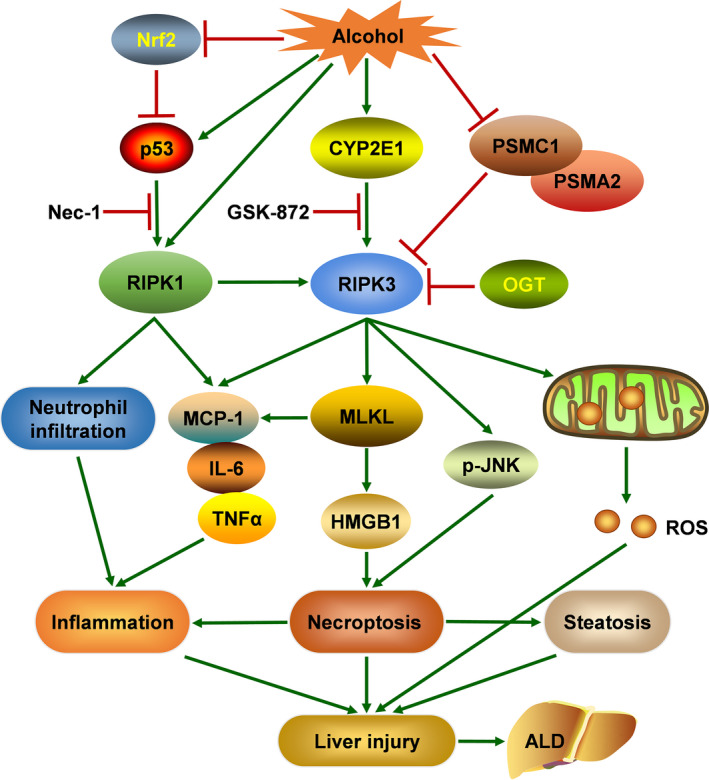FIGURE 2.

Relationship between necroptosis and alcoholic liver disease (ALD). Excessive alcohol consumption causes hepatic necroptosis, featured by increased expression of RIPK1 and RIPK3, which aggravates liver injury, steatosis and inflammation, eventually resulting in ALD. Elevated RIPK3 expression following alcohol exposure contributes to necroptosis, steatosis and mitochondrial ROS production, and RIPK1 activity is required for alcohol‐induced hepatic inflammation. Alcohol‐induced decreased expression of proteasome subunit α‐2 (PSMA2) and proteasome 26S subunit ATPase 1 (PSMC1) may lead to the hepatic accumulation of RIPK3. Furthermore, cytochrome P450 2E1 (CYP2E1) has been implicated as the upstream of RIPK3, while c‐jun N‐terminal kinase (JNK) acts as the downstream of RIPK3. O‐GlcNAc transferase (OGT) negatively regulates necroptosis via reducing the protein stability and expression of RIPK3. In addition, nuclear factor (erythroid‐derived 2)‐like 2 (Nrf2) pathway ameliorates alcohol‐induced liver injury by inhibiting necroptosis
